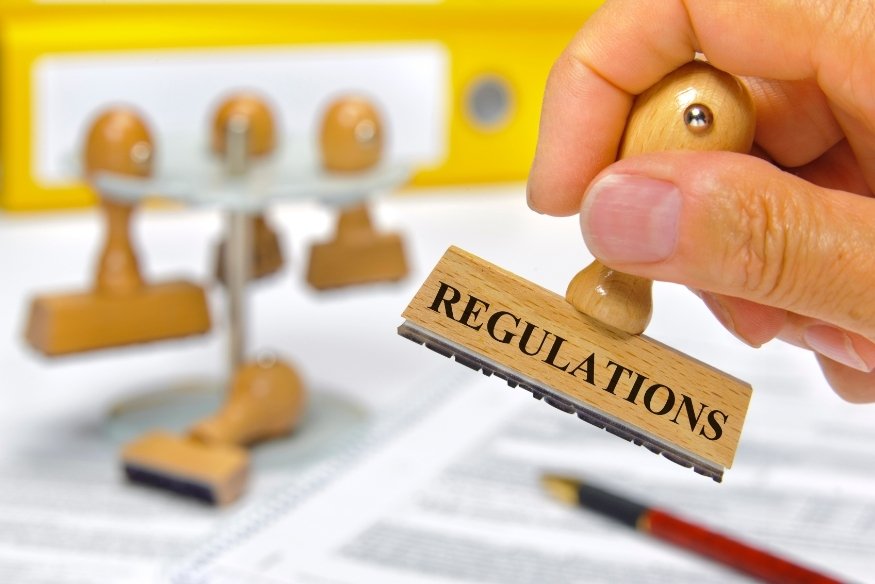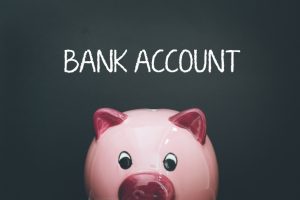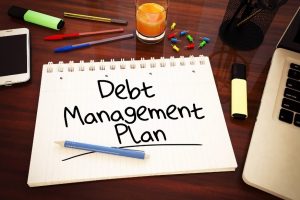In today’s digital world, keeping your financial security safe is crucial. Online transactions have increased, making credit card fraud a big worry worldwide, including in Finland.
Recent numbers show that credit card fraud cost $32.04 billion in 2021. It’s expected to hit $38.5 billion by 2027. This shows we must be careful to protect our money.
Knowing about scams and taking steps to avoid them can help a lot. By learning about fraudsters’ tricks, you can keep your money safe.
Key Takeaways
- Understand the growing threat of credit card fraud globally and in Finland.
- Learn how to identify common credit card scams.
- Discover proactive steps to protect your financial security.
- Recognize the importance of vigilance in preventing credit card fraud.
- Stay informed about the latest tactics used by fraudsters.
The Growing Threat of Credit Card Fraud in Finland

Credit card fraud is becoming a big problem in Finland. It’s a threat to both consumers and banks. As more people use digital payments, the system’s weaknesses are being shown.
Current Statistics on Credit Card Fraud
Recent numbers show a worrying trend in Finland. The number of fraud cases has gone up a lot. This shows fraudsters are getting smarter.
Why Finnish Consumers Are Increasingly Targeted
Finnish people are being targeted for a few reasons. The Nordic banking system has weak spots. Also, cross-border transactions carry risks.
Nordic Banking System Vulnerabilities
The Nordic banking system is strong but not perfect. Advanced threat detection systems are key to fixing these issues.
Cross-Border Transaction Risks
Transactions across borders are risky because of different security levels. Consumers must be careful when making international payments.
Understanding Credit Card Scams and How They Work
To keep your credit card safe, it’s key to know how scammers work. They use clever tricks to get your financial info. This can lead to big problems.
The Psychology Behind Scammer Techniques
Scammers play on your feelings to get what they want. They make you feel rushed or safe when you shouldn’t be. Knowing this can help you stay alert and careful.
How Criminals Obtain Card Information
Scammers use both online and offline ways to get your card details. Here are a few:
Digital Methods
- Phishing emails and messages that trick victims into revealing card details.
- Malware and viruses that infect devices to capture sensitive information.
Physical Methods
- Skimming devices at ATMs and payment terminals.
- Card trapping and other forms of tampering.
Knowing about these credit card scam techniques is very important. Infosys BPM says scammers use phishing and skimming to get your info. So, always be on guard.
| Method | Description | Prevention Tip |
|---|---|---|
| Phishing | Tricking victims into revealing card details via emails or messages. | Verify sender authenticity before responding. |
| Skimming | Capturing card information using devices at ATMs or payment terminals. | Inspect ATMs and terminals for signs of tampering. |
Most Common Types of Credit Card Scams
Credit card scams are getting smarter, so it’s key to know the common ones to stay safe. In Finland, scammers use many tricks to get your financial details.
Phishing and Smishing Attacks
Phishing and smishing are common scams. Phishing uses fake emails or messages that seem real, asking for your card info. Smishing sends texts to get the same info. Always be careful with links and never share sensitive info via email or text.
Skimming Devices at ATMs and Payment Terminals
Skimming devices are hidden at ATMs or payment spots to steal your card info. These devices are often very hard to spot. Always check the terminal for tampering before using it. Also, cover the keypad with your hand when typing your PIN.
Data Breaches and Identity Theft
Data breaches happen when hackers get into a company’s database. This can lead to identity theft, where your info is used for bad things.
Major Finnish Data Breaches
Finnish companies have faced data breaches too. Big retailers and banks have been hit, showing the need for strong security.
How Stolen Data Is Used
Scammers use your data for bad stuff like fake transactions or new credit cards in your name. It’s important to watch your accounts for any odd activity.
Social Engineering Tactics Used by Fraudsters
Fraudsters are getting smarter in their tricks, so it’s key to know what’s going on. Social engineering is when they trick people into sharing secrets or doing things that put their safety at risk.
Bank and Authority Impersonation
Fraudsters often pretend to be from banks or government to trick you. They might call, email, or text, saying they’re from a trusted place. Never give out personal or financial info without checking if it’s real.
Urgency and Fear-Based Manipulation
They try to scare you into acting fast. They might say your account is hacked or you owe money and need to act now. Stay calm and check the facts before you do anything.
Building False Trust Through Familiarity
Scammers might seem like they know you by using your friends’ names or your social media info. But, be careful of any messages that seem too good (or bad) to be true, even if they seem to come from someone you know.
Online Shopping Fraud: Securing Digital Transactions
Online shopping is convenient but comes with fraud risks. Knowing how to keep your transactions safe is key.
Identifying Fake Websites and Online Stores
First, check if a website is real. Look for “https” in the URL and a padlock icon to see if it’s secure. Watch out for sites with bad design, lots of typos, or those that ask for too much personal info.
Verifying Payment Portal Security
When you buy something, make sure the payment site is safe. Look for trust badges and check the URL. Don’t give out your credit card info on shady sites.
Subscription and Free Trial Scams
Be careful with subscription services or free trials that want your credit card info. Read the terms carefully and know how to cancel easily.
Popular Schemes Targeting Finnish Consumers
Finnish shoppers often face scams with big promises or fake products. Keep up with common scams to stay safe.
- Be cautious of unsolicited emails or messages with links to fake shopping sites.
- Use strong, unique passwords for your online shopping accounts.
- Regularly monitor your bank statements for suspicious transactions.
Warning Signs of Potential Credit Card Scams
Keeping your financial info safe starts with knowing scam warning signs. Scammers keep changing their tricks. But, there are common signs that can warn you of fraud.
Suspicious Communication Red Flags
Scammers use emails, texts, and calls to get your credit card details. Watch out for unsolicited messages asking for your card info.
Email and Text Message Indicators
Real banks and financial places don’t ask for your card info via email or text. Look for spelling mistakes, generic greetings, and urgent calls to action. These are signs of scams trying to scare you.
Phone Call Warning Signs
Be careful of calls saying they’re from your bank or a government agency. They might ask for money or threaten legal trouble. Always check the caller’s identity by calling your bank directly.
Unusual Transaction Patterns

Watching your account closely can help you spot odd transactions. Citizens Bank advises checking your statements often. Report any strange activity to your bank right away.
Offers That Seem Too Good To Be True
If an offer seems too good, it likely is. Be careful of offers with high returns or unrealistic benefits. These are often scams trying to get your money or info.
Being alert and informed is key to avoiding credit card scams. By knowing these warning signs, you can lower your risk of falling for fraud.
Physical Card Security Best Practices
With more credit card scams, knowing how to keep your card safe is key. As a cardholder, you’re a big part of keeping your money safe.
PIN Protection Strategies
Your PIN is your first defense against fraud. Never share it with anyone. Avoid using numbers like your birthdate, as they’re easy to guess. Choose a unique PIN and remember it, not write it down.
Safe Card Storage and Handling
Always keep your card in a safe spot, like a wallet or card holder. Be careful when giving your card to others. Make sure it’s returned to you right after you use it.
Smart Choices Between Chip, Contactless, and Mobile Payments
Different ways to pay have different security levels.
When Each Payment Method Is Safest
| Payment Method | Safest Use Case |
|---|---|
| Chip Payments | High-value transactions where PIN or signature is required |
| Contactless Payments | Low-value, everyday purchases where speed is essential |
| Mobile Payments | Transactions where device authentication is enabled |
Infosys BPM suggests using different cards for different needs. This includes using one card for autopay and another for daily purchases. It helps keep your money safer.
Digital Security Measures to Prevent Credit Card Scams
To stop credit card scams, strong digital security is key. Bank of America says using advanced tools helps catch and stop fraud.
Password Management and Security
Good password management is your first defense. Use strong, unique passwords for each account. Think about using a password manager to keep them safe. Change your passwords often to stay secure.
Two-Factor Authentication Implementation
Two-factor authentication (2FA) adds extra security. It asks for a second verification, like a code to your phone or a scan, making it tough for scammers.
Secure Network Practices
Always use secure networks for online deals. Be careful with public Wi-Fi since it’s easy to hack.
Public Wi-Fi Risks
Public Wi-Fi is not safe because hackers can easily get your data. Don’t use it for financial stuff.
Home Network Protection
Keep your home network safe with a strong router password and WPA3 encryption. Update your router’s software to fix security holes.
By using these digital security measures, you can lower the chance of credit card scams. This helps keep your financial info safe.
Proactive Account Monitoring Strategies
Staying ahead of credit card fraud and scams is key. Being vigilant and informed can greatly lower your risk of financial fraud.
Setting Up Customized Alerts and Notifications
Customized alerts are a powerful tool for account monitoring. Banks in Finland, like many others, offer alert services. These alert you to transactions over a certain amount, unusual activity, or transactions in different countries. To set up these alerts, log into your online banking or mobile app. Look for the alerts or notifications option in the settings.
You can usually get alerts via SMS, email, or push notifications.
Effective Statement Review Techniques
Checking your account statements regularly is essential. Look for transactions you don’t recognize and verify the dates and amounts. Make sure your account information is current. It’s also wise to compare your statements with your own records of transactions.
For more on managing account takeover fraud, visit this resource.
Leveraging Finnish Banking Apps for Security
Finnish banking apps focus on security. They offer features like real-time transaction monitoring and the ability to freeze or block your card instantly. You can also see detailed transaction history.
Popular Finnish Bank Security Features
| Bank | Real-time Transaction Monitoring | Card Freezing/Blocking |
|---|---|---|
| Nordea | Yes | Yes |
| OP | Yes | Yes |
| Danske Bank | Yes | Yes |
By using these features and staying proactive, you can boost your financial security. This reduces the risk of falling victim to credit card scams.
Immediate Response Plan If You’ve Been Scammed
If you’ve been scammed with your credit card, it’s important to act fast. Quick action can stop more scams and keep your money safe.
First 24 Hours: Critical Steps
The first 24 hours are key when dealing with a credit card scam. Here’s what you should do:
- Freeze your credit card to stop more scams.
- Get all the documents you need to prove it was a scam.
- Tell your bank or financial institution about the scam.
Card Freezing Procedures
Freezing your card is easy. You can do it through your bank’s app, online, or by calling them. Freezing your card fast stops more scams.
Documentation Requirements
You’ll need to collect some documents to prove it was a scam. Having these ready helps your bank process your claim faster.
Reporting to Finnish Financial Institutions
Tell your bank or financial institution about the scam right away. They can help you protect your account.
Filing Police Reports and Consumer Complaints
After telling your bank, file a police report and report it to consumer protection in Finland. This helps stop others from getting scammed too. You can report it to the Finnish Police or the Consumer Ombudsman for help.
Finnish Consumer Protections Against Credit Card Fraud
Finnish consumers are protected from credit card fraud by strict banking rules and consumer rights. Knowing these protections helps you stay safe in the financial world.
Banking Regulations and Liability Limits

In Finland, banks have zero-liability policies for consumers who report fraud quickly, as Infosys BPM says. This means you won’t be blamed for unauthorized transactions if you report them fast.
Consumer Rights Under Finnish Law
Finnish law gives strong protection to consumers, keeping you safe from financial losses due to scams. You have the right to get your money back for fraudulent transactions.
Reimbursement Procedures and Timelines
If your credit card is stolen, you need to tell your bank right away. Keeping good records helps the process go smoothly.
Documentation Requirements
| Document | Description | Timeline for Submission |
|---|---|---|
| Fraud Report | Detailed report of the fraudulent transaction | Within 3 days |
| Police Report | A copy of the report filed with the local police | Within 1 week |
| Bank Statement | Statement showing the fraudulent transaction | Within 1 month |
Conclusion: Building Lasting Financial Security
You now know how vital it is to avoid credit card scams for lasting financial security. By staying alert and taking the right steps, you can lower the chance of falling prey to credit card fraud.
To keep your finances safe, always check your account statements. Also, set up alerts and notifications that fit your needs. Use Finnish banking apps to watch your accounts and report any odd transactions right away.
By following the tips in this article, you can safeguard your financial info and dodge credit card scams. Always be on the lookout and make preventing credit card scams a top priority to keep your finances secure.









